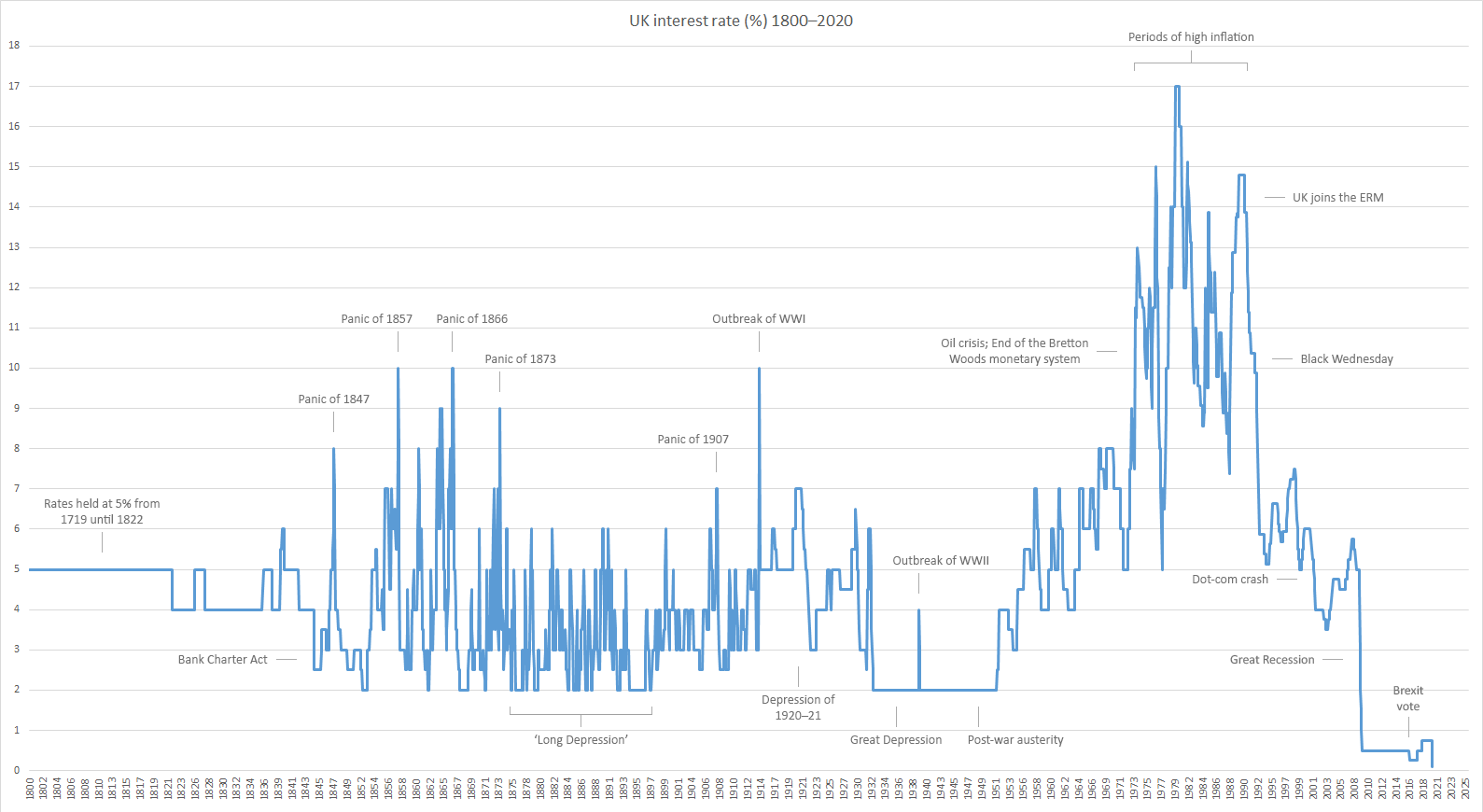Official bank rate on:
[Wikipedia]
[Google]
[Amazon]
In the United Kingdom, the official bank rate is the rate that the

Bank of England
The Bank of England is the central bank of the United Kingdom and the model on which most modern central banks have been based. Established in 1694 to act as the English Government's banker, and still one of the bankers for the Government o ...
charges banks and financial institutions for loans with a maturity of 1 day. It is the British Government's key interest rate for enacting monetary policy
Monetary policy is the policy adopted by the monetary authority of a nation to control either the interest rate payable for federal funds, very short-term borrowing (borrowing by banks from each other to meet their short-term needs) or the money s ...
. It is more analogous to the US discount rate than to the federal funds rate. The security for the lending can be any of a list of eligible securities (commonly gilts
Gilt-edged securities are bonds issued by the UK Government. The term is of British origin, and then referred to the debt securities issued by the Bank of England on behalf of His Majesty's Treasury, whose paper certificates had a gilt (or gilde ...
) and the transactions are overnight repurchase agreements. Changes are recommended by the Monetary Policy Committee Monetary Policy Committee (MPC) may refer to:
* Monetary Policy Committee (India)
The Monetary Policy Committee is responsible for fixing the benchmark interest rate in India. The meetings of the Monetary Policy Committee are held at least fo ...
and enacted by the Governor
A governor is an administrative leader and head of a polity or political region, ranking under the head of state and in some cases, such as governors-general, as the head of state's official representative. Depending on the type of political ...
.
On 2 August 2018 the Bank of England base rate was increased to 0.75%, but then cut to 0.25% on 11 March 2020, and shortly thereafter to an all-time low of 0.1% on 19 March, as emergency measures during the COVID-19 pandemic
The COVID-19 pandemic, also known as the coronavirus pandemic, is an ongoing global pandemic of coronavirus disease 2019 (COVID-19) caused by severe acute respiratory syndrome coronavirus 2 (SARS-CoV-2). The novel virus was first identi ...
. It has since increased eight times to its current rate of 3% as of 3 November 2022.
History
The official bank rate has existed in various forms since 1694 and has ranged from 0.1% to 17%. The name and meaning (depositing vs lending) of this key interest rate has changed over the years. The current name, Official Bank Rate, was introduced in 2006 and replaced the previous Repo Rate (repo is short forrepurchase agreement
A repurchase agreement, also known as a repo, RP, or sale and repurchase agreement, is a form of short-term borrowing, mainly in government securities. The dealer sells the underlying security to investors and, by agreement between the two pa ...
) in use since 1997. Previously (between 1981 and 1997) the name was Minimum Band 1 Dealing Rate and prior to that the Minimum Lending Rate.

See also
*Bank rate
Bank rate, also known as discount rate in American English, is the rate of interest which a central bank charges on its loans and advances to a commercial bank. The bank rate is known by a number of different terms depending on the country, and ...
*Implied repo rate
Implied repo rate (IRR) is the rate of return of borrowing money to buy an asset in the spot market and delivering it in the futures market where the notional is used to repay the loan.
Simplified closed form
IRR = \left( \frac \text \text -1 ...
* Repo rate
References
Bank of England Interest rates Banking terms {{bank-stub